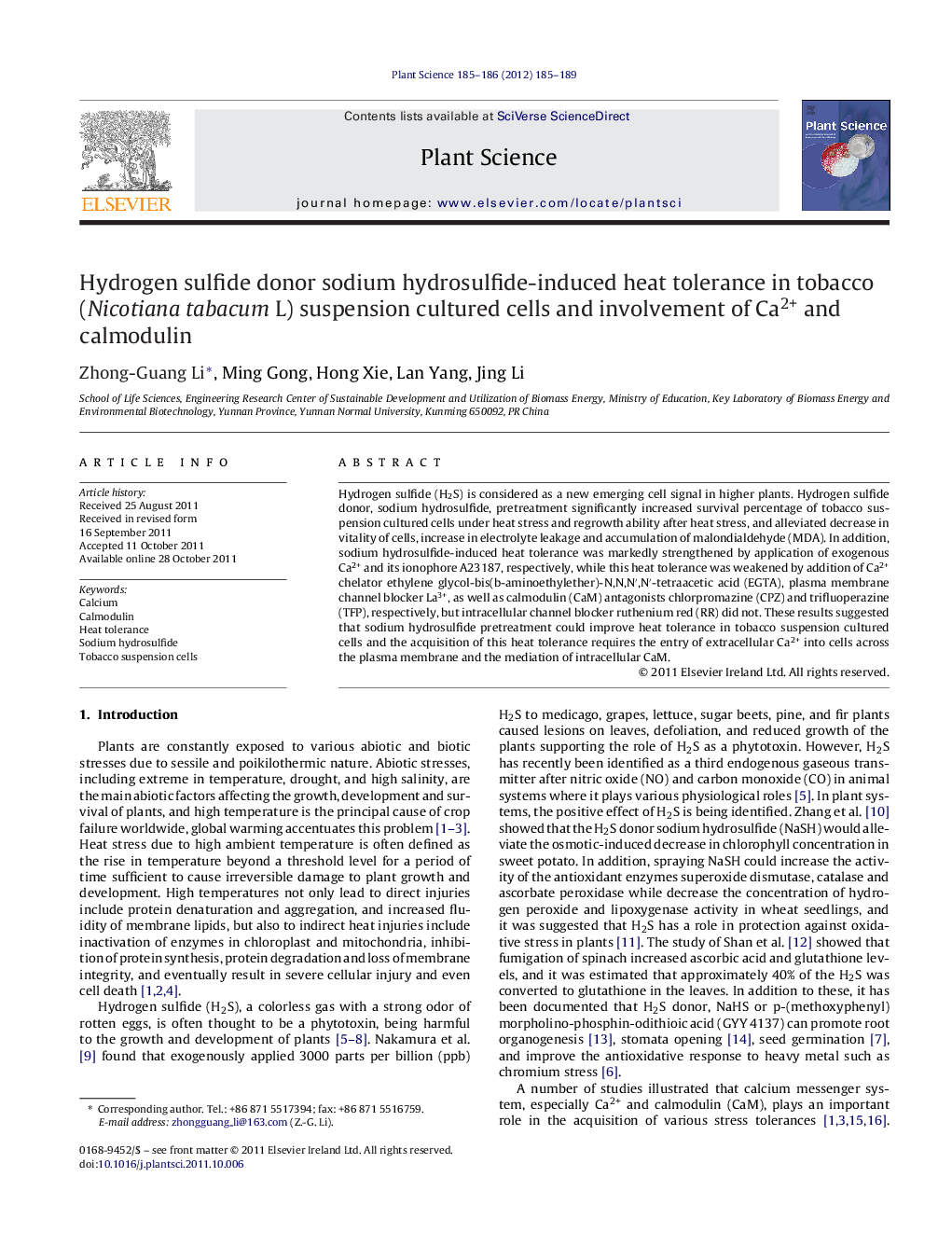| Article ID | Journal | Published Year | Pages | File Type |
|---|---|---|---|---|
| 2017453 | Plant Science | 2012 | 5 Pages |
Hydrogen sulfide (H2S) is considered as a new emerging cell signal in higher plants. Hydrogen sulfide donor, sodium hydrosulfide, pretreatment significantly increased survival percentage of tobacco suspension cultured cells under heat stress and regrowth ability after heat stress, and alleviated decrease in vitality of cells, increase in electrolyte leakage and accumulation of malondialdehyde (MDA). In addition, sodium hydrosulfide-induced heat tolerance was markedly strengthened by application of exogenous Ca2+ and its ionophore A23187, respectively, while this heat tolerance was weakened by addition of Ca2+ chelator ethylene glycol-bis(b-aminoethylether)-N,N,N′,N′-tetraacetic acid (EGTA), plasma membrane channel blocker La3+, as well as calmodulin (CaM) antagonists chlorpromazine (CPZ) and trifluoperazine (TFP), respectively, but intracellular channel blocker ruthenium red (RR) did not. These results suggested that sodium hydrosulfide pretreatment could improve heat tolerance in tobacco suspension cultured cells and the acquisition of this heat tolerance requires the entry of extracellular Ca2+ into cells across the plasma membrane and the mediation of intracellular CaM.
► H2S pretreatment increased heat tolerance of tobacco suspension cultured cells. ► H2S-induced heat tolerance was strengthened by Ca2+ and its ionophore A23187, respectively. ► H2S-induced heat tolerance was weakened by EGTA, La3+, and CaM antagonists CPZ and TFP, respectively.
